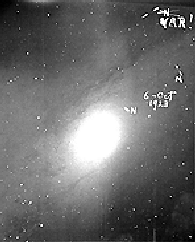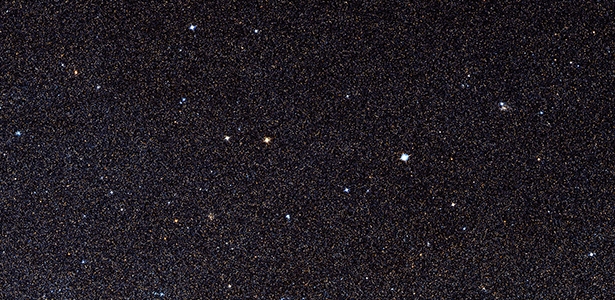¡SkyCaramba! Weekly astronomy blog for the week ending July 25, 2015

A century ago, astronomers didn’t make much distinction between the universe and the galaxy we live in. They didn’t understand that ours isn’t the only galaxy. Nor did they understand how big the galaxy and the universe really are. They believed that if people could travel just 30,000 light years, they would leave all the stars that exist behind them.
By the 1920s, a few scientists had speculated that far beyond the stars still lay at least some of the nebulae, those glowing smudges that the best optics of the time still couldn’t bring into focus. A few even wondered if nebulae were giant groups of stars separate from the one we live in. But without proof, most astronomers rejected that view.
In 1923, astronomer Edwin Hubble photographed what appeared to be a new star in the Great Andromeda Nebula. He examined more pictures intending to confirm a nova. However, he found that the star was there before. It just hadn’t been so bright. It turns out, the star is a cepheid variable.

Cepheid variables are named for the first such star recognized in the constellation Cepheus. They change brightness regularly – so regularly, you can mark a calendar by them. And the longer such a star needs to go from dimmest to brightest, the brighter it is at its peak. Astronomers can figure out how far away a cepheid variable is by timing it, determining how bright it must be up close, and then comparing how much dimmer it is when its light gets to us.
Hubble’s measurements destroyed the prevailing notions of how far away things are. He calculated the variable star to be a million light years away! Scientists began describing nebulae as island universes unto themselves. Eventually, galaxy became the preferred word for giant groups of stars with billions of members, and universe became the thing even bigger containing them. The Great Andromeda Nebula became the Andromeda Galaxy. A nebula is now considered a mass of gas or dust illuminated by star light.
Better measuring tools and more research on cepheid variables have led to the conclusion that the Andromeda Galaxy is even farther away than Hubble thought. At 2.5 million light years away and 220,000 light years wide, it is both the most distant and biggest thing the naked eye can see. Ancient writers called it a cloud. The orbiting telescope bearing Hubble’s name shows it contains billions of stars.

¡SkyCaramba!